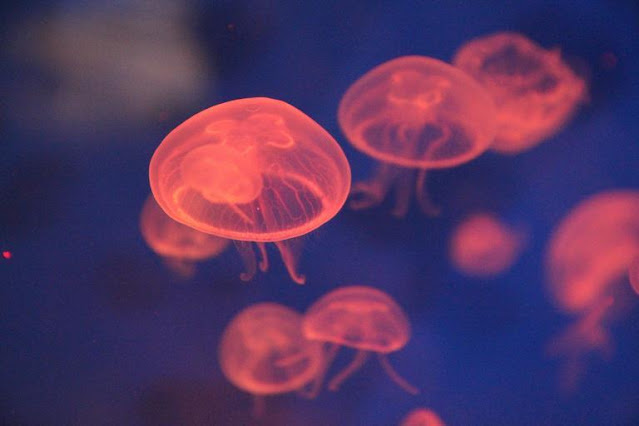in this article we're gonna talk about carbohydrates we're gonna briefly review monosaccharides disaccharides and polysaccharides let's start with monosaccharides the word mono means one so we're going to go over the simple sugar units the first one is glucose I'm going to draw that real quick glucose is a monosaccharide with six carbons this is the cyclic form of glucose it does have a linear form as well and so this is how it looks like this is the Alpha form of glucose with the hydroxyl group down on carbon one this is carbon one two three four five six the chemical formula for glucose is c6h12o6 and it turns out that carbohydrates have the empirical formula C 1 H 2 O 1 thus you can see the word carbon and hydrate thus carbohydrates fructose forms a five membered ring in its cyclic form but fructose have the same chemical formula as glucose and the structure looks like this fructose is a ketose hexose in its linear structure it forms a ketone a ketone rather functional group glucose is an aldose in its straight-chain function I mean straight to instruction rather it forms an aldehyde functional group glucose and fructose are known as isomers of each other these have the same chemical formulas c6h12o6 but as you can see they form different structures another one that you need to be familiar with is a monosaccharide called galactose glucose and galactose are very similar they both form six membered rings and are both aldohexoses notice the key difference between it - there's one small difference between glucose and galactose do you see what it is glucose and galactose they differ at carbon four at carbon four the hydroxyl group is pointing up in galactose but in glucose is pointing down everything else is the same in glucose and galactose are known as stereo isomers they have the same chemical formula their atoms are connected the same way they have the same function of grooves but the only difference is that the way their hydroxyl groups are oriented in space sera isomers have the same connectivity but different spatial arrangements of the atoms so glucose and galactose are stereo isomers now galactose is specifically called a c4 epimer of glucose because it is at carbon four that they differ and they only differ at one particular carbon not two or more carbons which makes it an epimer now there are some other models saccharides that you may want to be familiar with the next one that I'm going to draw is a sugar called ribose a ribose is a five carbon sugar and it also forms a five membered ring so that's the structure of ribose now ribose is the sugar that is found in nucleic acids such as RNA RNA stands for ribonucleic acid now there is another five carbon sugar that you need to be familiar with and the one I'm gonna draw it is called deoxy ribose look at the difference between these two structures what do you notice notice that the hydroxyl group has been replaced with four hydrogen so that's why it's called deoxy ribose another five carbon sugar deoxyribose is found in a different nucleic acid called DNA which stands for deoxyribonucleic acid so those are some other two sugars that you want to be familiar with and the simplest sugar is known as glyceraldehyde this is a three carbon sugar so that's it for the monosaccharides so monosaccharides are basically one sugar units
Popular Posts

Review Of Essential Algebra, Part 2
January 18, 2021

Review Of Essential Trigonometry
January 16, 2021

Intro to Cell Structure - Quick Review!
January 11, 2021
Subscribe Us
Categories
Created By SoraTemplates | Distributed By Blogger Themes


0 Comments